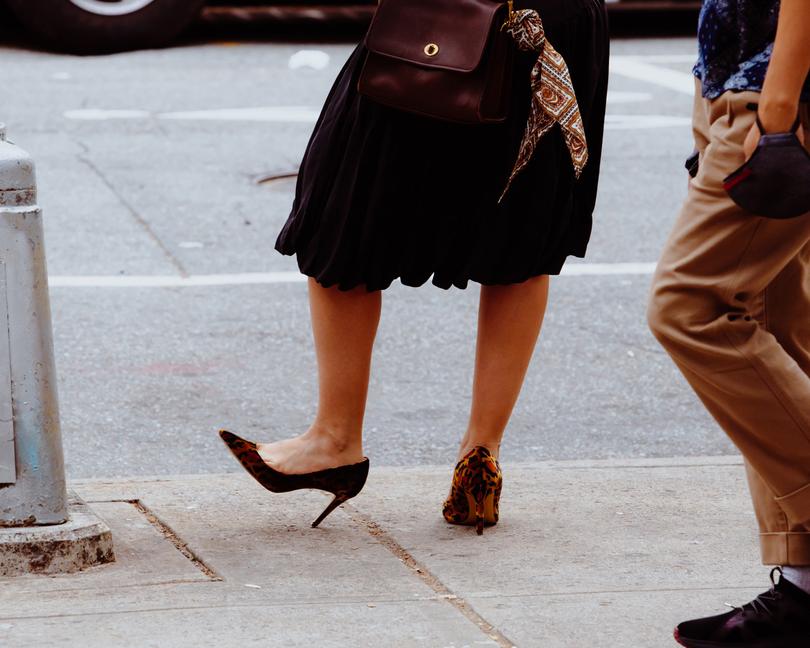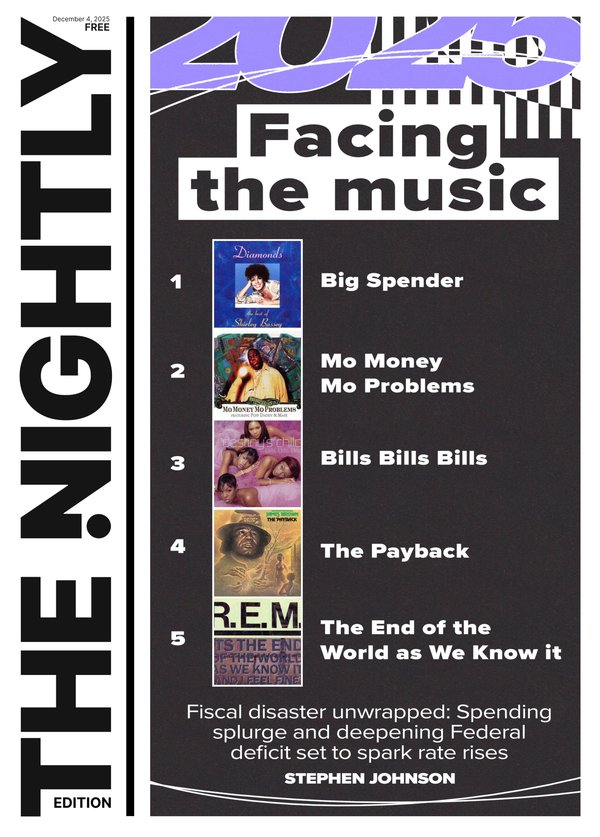THE NEW YORK TIMES: How short is too short for a skirt?

Q: I love short skirts, but as a fit, professional woman, how short can I go? I am comfortable with 2, maybe 3, inches above the knee, but I fear dressing “too young” as the years go by. How will I know when I have gone over the line? — Ann, Portsmouth, N.H.
A: Even before Ally McBeal spawned a cottage industry of should-you-or-shouldn’t-you chatter by wearing exceedingly short skirts to her law firm in the 1990s sitcom, and before Mary Quant rocked the fashion world with the miniskirt in the 1960s, Gussie Moran caused a ruckus in the tennis world in 1949 by chopping the knee-length playing skirt to upper thigh, the better to move around the court.
Tennis fans quailed, Wimbledon authorities freaked and Moran, nicknamed “Gorgeous Gussie,” was charged with bringing “vulgarity and sin into tennis.”
Sign up to The Nightly's newsletters.
Get the first look at the digital newspaper, curated daily stories and breaking headlines delivered to your inbox.
By continuing you agree to our Terms and Privacy Policy.The point being: Short skirts in the workplace have always been controversial, no matter what the office or the age of the person wearing them.
It started with the ankle back in the Victorian era and has continued incessantly.
For some people, any sight of leg is a problem. This is simply another dimension of the body problem, in which exposure of the female physique is seen as warning sign and temptation and has its roots in age-old prejudices and fears.
It is not, however, illegal.
“In general, anything up to the private parts can be legally exposed in public,” said Susan Scafidi of the Fashion Law Institute at Fordham University.
Which means you can officially wear your skirts as short as you want almost anywhere — as long as you are willing to deal with the judgments of those around you.
And the fact (see McBeal) that conversations may centre as much around what you wear as what you do.
Which can work for or against you.
On the one hand, it is annoying to have your clothes be the focus of attention rather than your substance.
This is especially so given the way fashion has been used as a tool to dismiss women as decorative and not serious contenders for top jobs. (The skirt scandal helped mess up Moran’s career.)
On the other hand, it’s annoying to have to deny your gender to prove yourself.
I considered it a breakthrough when Michelle Obama wore floral dresses as first lady instead of staid skirt suits, as if to confront the world with the fact that one could be a change agent and a woman at the same time.
A good friend who started her career as a government lawyer said she remembered a colleague from her early days in Washington who was known in the office for wearing “too-short skirts and leather.”
“We were all on the fence about it,” my friend said, “but she knew, and it was her thing.”

In the end, the short skirts became her colleague’s signature and, because she refused to give in to social pressure to change, a sign of her toughness.
This is also the approach of Susan Greenfield, 73, a University of Oxford neuroscientist, author and first female director of the Royal Institution, who has been called “Britain’s best-known scientist” thanks to her career and her penchant for wearing miniskirts well into middle age.
“I hate drab clothes,” Greenfield told The London Times. “And I wear short skirts because my legs are skinny like Olive Oyl’s.” Also because having fun with clothes helped in her quest to popularise science.
Tory Burch, 58, whose current collection happens to include a lot of short skirts specifically designed to “help women feel chic, confident and powerful,” said that “it comes down to balance.”
“If a skirt is very short, I like to wear it with a higher neckline,” Burch said. Think a minidress with a car coat or a short skirt with a long blazer. In winter, think matte tights.
In the end, the choice comes down to what makes you feel most confidently yourself, rather than anything to do with fashion, which these days offers skirts short, long and every length in between. (For her part, Diane von Furstenberg, 77, said, “I believe the hem should flirt with the knee, either above or below.”)
If you are constantly worrying that your skirts are too short, they probably are, not because of any immutable rule but because thinking about what other people think is occupying too much of your brain.
If refusing to kowtow to old mores makes you feel more powerful — sort of like a display of plumage before battle — great. The choice is yours. And choice is always a good thing.
This article originally appeared in The New York Times.
© 2024 The New York Times Company
Originally published on The New York Times
